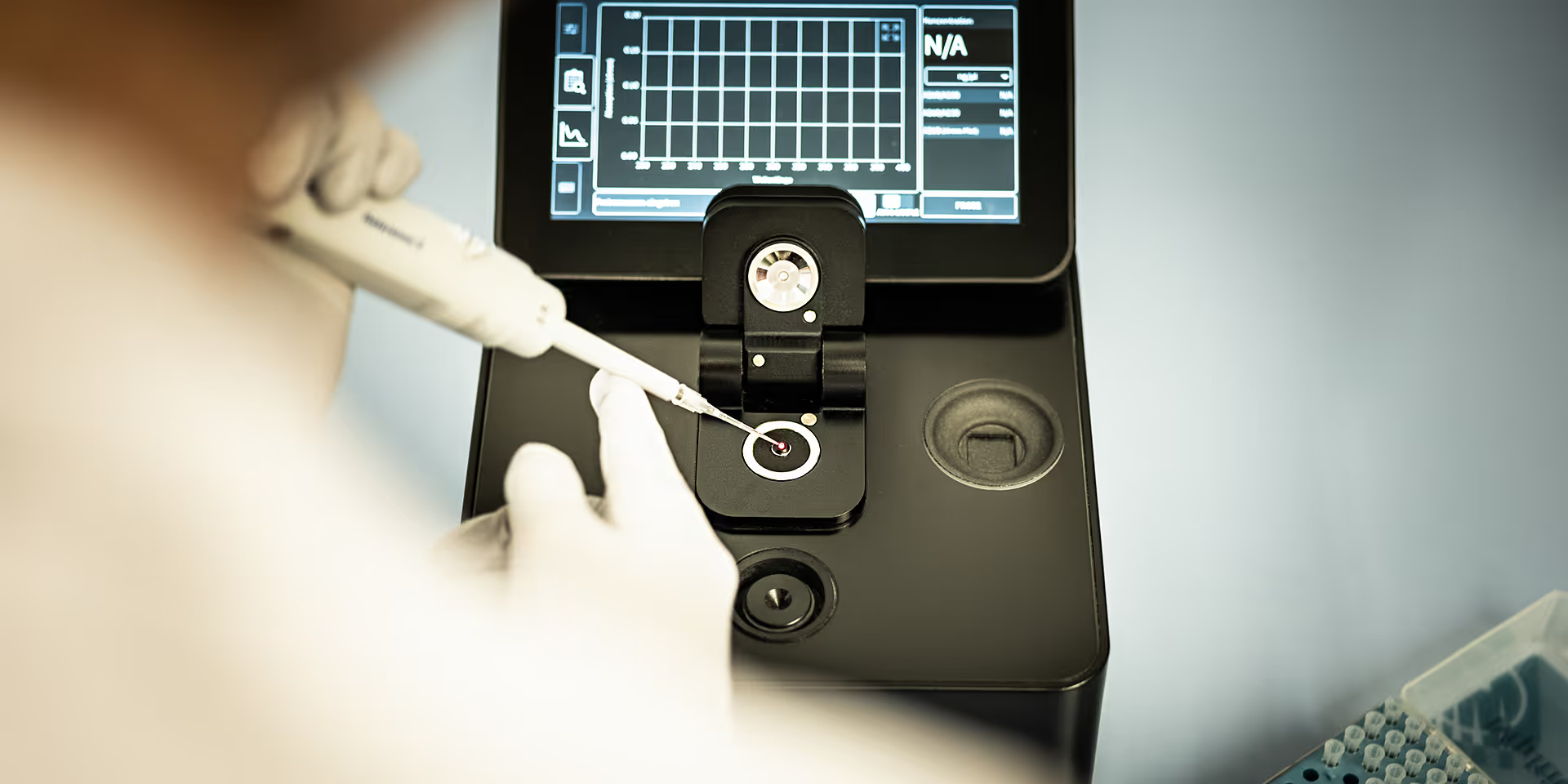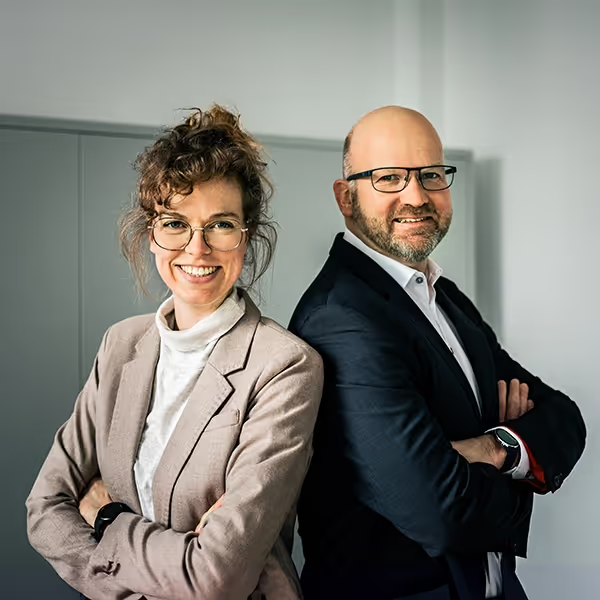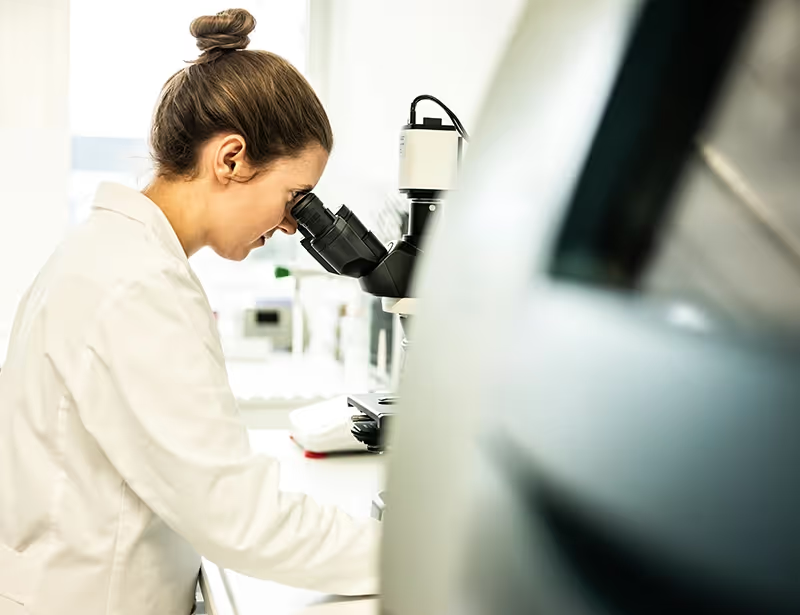F. Weber, C. Buschmann, R. Shankar, C. Ramke, R. Klementz, M. Leupold, J. Rupprecht, A. Vetter, K. Teschner, S. Klausing, M. Schmeer, M. Schleef (2024), Single-Use Fermenters for Plasmid and Minicircle DNA Production. Molecular Therapy (Abstract for 27th ASGCT Annual Congress, Baltimore)
R. Shankar, N. Schäffer, C. Krüsemann, M. Schmeer, M. Schleef (2024), A High Quality Minicircle Production Scale-Up Success Story: AEX-HPLC In-Process Controls to Guide Upstream Process Modification. Molecular Therapy (Abstract for 27th ASGCT Annual Congress, Baltimore)
R. Shankar, N. Schäffer, C. Krüsemann, M. Schmeer, M. Schleef (2024), Template plasmids for mRNA production – focus on poly(A) elements.
(Abstract for 31st ESGCT Annual Congress, Rome& Human Gene Therapy)
R. Shankar, M. Radukic, N. Schäffer, M. Schmeer, M. Schleef, K. Müller (2024), Stabilizing ITR elements in AAV transfer plasmids. (Abstract for 31st ESGCT Annual Congress, Rome & Human Gene Therapy)
F. Weber, C. Buschmann, R. Shankar, R. Baier, C. Ramke, R. Klementz, M. Leupold, J. Rupprecht, A. Buve, K. Teschner, S. Klausing, M. Schmeer, M. Schleef (2024), Single-Use Fermentors for Plasmid and Minicircle DNA Production. Bioprocess International
R. Shankar, M. Schmeer, M. Schleef (2024), Producing Plasmid DNA Template for Clinical Grade RNA Vaccine Manufacture. Methods Molecular Biology
R. Shankar, N. Schäffer, C. Krüsemann, M. Schmeer, M. Schleef (2023), A High Quality minicircle production scale up success story: AEX-HPLC in-process controls to guide upstream process modification. Human Gene Therapy (Abstract for 30th ESGCT Annual Congress, Brussels)
A. Burgardt, M. Strakeljahn, R. Shankar, M. Wiedemann, M. Schleef (2023), Validation of an analytical capillary gel electrophoresis method for the relative quantification of plasmid DNA topoisoforms. Human Gene Therapy (Abstract for 30th ESGCT Annual Congress, Brussels)
A. Zaharie, T. Luttermann, R. Shankar, M. Schmeer, B. Müller, M. Schleef (2023), Quantitative determination of host cell RNA residues against a DNA background by LC-MS. Human Gene Therapy (Abstract for 30th ESGCT Annual Congress, Brussels)
M. Radukic, R. Shankar, M. Schmeer, M. Schleef, K. Müller (2023), Production of synthetic AAV genomes from minicircle templates for enhanced gene therapy applications. Human Gene Therapy (Abstract for 30th ESGCT Annual Congress, Brussels)
M. Izco, M. Schleef, M. Schmeer, E. Carlos, G. Verona, L. Alvarez-Erviti (2023), Targeted Extracellular Vesicle Gene Therapy for Modulating Alpha-Synuclein Expression in Gut and Spinal Cord. Pharmaceutics
R. Shankar, N. Schäffer, C. Krüsemann, M. Schmeer, M. Schleef (2022), In-process controls for plasmid isoform characterization. (Abstract for 29th ESGCT Annual Congress, Edinburgh, https://doi.org/10.1089/hum.2022.29225.abstracts and Human Gene Therapy)
D. Lock , R. Monjezi, C. Brandes , S. Bates, S. Lennartz, K. Teppert , L. Gehrke, R. Karasakalidou-Seidt, T. Lukic, M. Schmeer, M. Schleef, N. Werchau, M. Eyrich , M. Assenmacher, A. Kaiser, S. Prommersberger, T. Schaser, M. Hudecek (2022), Automated, scaled, transposon-based production of CAR T cells. Journal for Immuno Therapy of Cancer
S. Prommersberger, R. Monjezi, R. Shankar, M. Schmeer, M. Hudecek, Z. Ivics, M. Schleef (2022), Minicircles for CAR T Cell Production by Sleeping Beauty Transposition: A Technological Overview. Gene Therapy Of Cancer – Methods and Protocols
M. Schmeer, M. Schleef, R. Shankar, D. Kobelt, W. Walther (2022), Capillary Gel Electrophoresis (CGE) for Quality Control of Plasmid DNA in Gene Therapy: Quality Control of 20 Years Stored GMP-Grade Plasmid DNA. Gene Therapy Of Cancer – Methods and Protocols
R. Shankar, N. Schäffer, M. Schmeer, J.M. Risse, K. Friehs, M. Schleef (2021), Recombinant expression of Barnase in Escherichia coli and its application in plasmid purification. Microbial Cell Factories
M. Izco, J. Blesa, M. Schleef, M. Schmeer, R. Porcari, R Al-Shawi, S. Ellmerich, M. de Toro, C. Gardiner, Y. Seow, A. Reinares.Sebastian, R. Forcen, JP. Simons, V. Belotti, JM. Cooper, L. Alvarez-Erviti (2019), Systemic Exosomal Delivery of shRNA Minicircles Prevents Parkinsonian Pathology. Molecular Therapy
T. Buchholz, M. Schleef (2018), Classification and Regulation of Advanced Therapy Medicinal Products. International Biopharmaceutical Industry
T. Buchholz, C.J. Christel, H. Besir (2018), Customised Viral Engineering - Proactive Progress. European Biopharmaceutical Review
M. Holstein, C. Mesa-Nuñez, C. Miskey, E. Almarza, V. Poletti, M. Schmeer, E. Grueso, JC. Ordóñez Flores, D. Kobelt, W. Walther, MK. Aneja, J. Geiger, HB Bonig, Z. Izsvák, M. Schleef, C. Rudolph, F. Mavilio, JA. Bueren, G. Guenechea, Z. Ivics (2018), Efficient Non-viral Gene Delivery into Human Hematopoietic Stem Cells by Minicircle Sleeping Beauty Transposon Vectors. Molecular Therapy
T. Buchholz, M. Schmeer, M. Schleef (2017), Size Matters. European Biopharmaceutical Review
M. Schmeer, T. Buchholz, M. Schleef (2017), Plasmid DNA Manufacturing for Indirect and Direct Clinical Applications. Human Gene Therapy
W. Garrels, TR. Talluri, M. Ziegler, I. Most, DO. Forcato, M. Schmeer, M. Schleef, Z. Ivics, W. A. Kues (2016), Cytoplasmic injection of murine zygotes with Sleeping Beauty transposon plasmids and minicircles results in the efficient generation of germline transgenic mice. Biotechnology Journal
M. Schnödt, M. Schmeer, B. Kracher, C. Krüsemann, L. E. Espinosa, A. Grünert, T. Fuchsluger, A. Rischmüller, M. Schleef, H. Büning (2016), DNA Minicircle Technology Improves Purity of Adeno-associated Viral Vector Preparations. Molecular Therapy—Nucleic Acids
R. Monjezi, C. Miskey, T. Gogishvili, M. Schleef, M. Schmeer, H. Einsele, Z. Ivics, M. Hudecek (2016), Enhanced CAR T-cell engineering using non-viral Sleeping Beauty transposition from minicircle vectors. Leukemia
I. Freudenau, P. Lutter, R. Baier, M.Schleef, H. Bednarz, A. R. Lara, K. Niehaus (2015), ColE1-plasmid production in Escherichia coli: mathematical simulation and experimental validation. Frontiers in Bioengineering and Biotechnology
H. Akita, D. Kurihara, M.Schmeer, M. Schleef, H. Harashima (2015), Effect of the Compaction and the Size of DNA on the Nuclear Transfer Efficiency after Microinjection in Synchronized Cells. Pharmaceutics
M. Schmeer, M. Schleef (2014), Pharmaceutical Grade Large-Scale Plasmid DNA Manufacturing Process. Methods in Molecular Biology
D. Kolbelt, M. Schleef, M. Schmeer, J. Aumann, P.M. Schlag, W. Walther (2013), Performance of High Quality Minicircle DNA for In Vitro and In Vivo Gene Transfer. Molecular Biotechnology
S. Chabot, J. Orio, M. Schmeer, M. Schleef, M. Golzio, J. Teissié (2013), Minicircle DNA Electrotransfer for efficient Tissue targeted Gene Delivery. Gene Therapy
M. Viefhues, S. Wegener, A. Rischmüller, M. Schleef, D. Anselmetti (2013), Dielectrophoresis based continuous-flow nano sorter: fast quality control of gene vaccines. Lab Chip
M. Schleef (2013), Non Viral DNA Vectors. Advanced Textbook on Gene Transfer, Gene Therapy and Genetic Pharmacology
M. Schleef (2013), Production and Purification of Plasmid Vectors. Advanced Textbook on Gene Transfer, Gene Therapy and Genetic Pharmacology
W. Walther, M. Schmeer, D. Kobelt, R. Baier, A. Harder, V. Walhorn, D. Anselmetti, J. Aumann, I. Fichtner, M. Schleef (2013), A seven-Year Storage Report of Good Manufacturing Practice-Grade Naked Plasmid DNA: Stability, Topology, and In Vitro/In Vivo Functional Analysis. Human Gene Therapy Clinical Development
M. Schleef (ed.) (2013), Minicircle and Miniplasmid DNA Vectors, The Future of Non-Viral and Viral Gene Transfer. Wiley-VCH Weinheim
M. Schleef, M. Blaesen, M. Schmeer, R. Baier, C. Marie, G. Gickson, D. Scherman (2010), Production of non viral DNA Vectors. Current Gene Therapy
M. Schmeer (2009), Electroporative Gene Transfer. in Molecular Biology
M. Schleef, M. Blaesen (2009), Production of Plasmid DNA as a Phamaceutical. Methods in Molecular Biology
C. Maucksch, A. Bohla, F. Hoffmann, M. Schleef, M. K. Aneja, M. Elfinger, D. Hartl, C. Rudolph (2009), Transgene expression of transfected supercoiled plasmid DNA concatemers in mammalian cells. The Journal of Gene Medicine
M. Schleef, R. Baier, W. Walther, M.L. Michel, M. Schmeer (2006), Long-Term Stability Study and Topology Analysis of Plasmid DNA By Capillary Gel Electrophoresis. BioProcess International
M. Schleef (ed.) (2005), DNA-Pharmaceuticals. Wiley-VCH Weinheim





